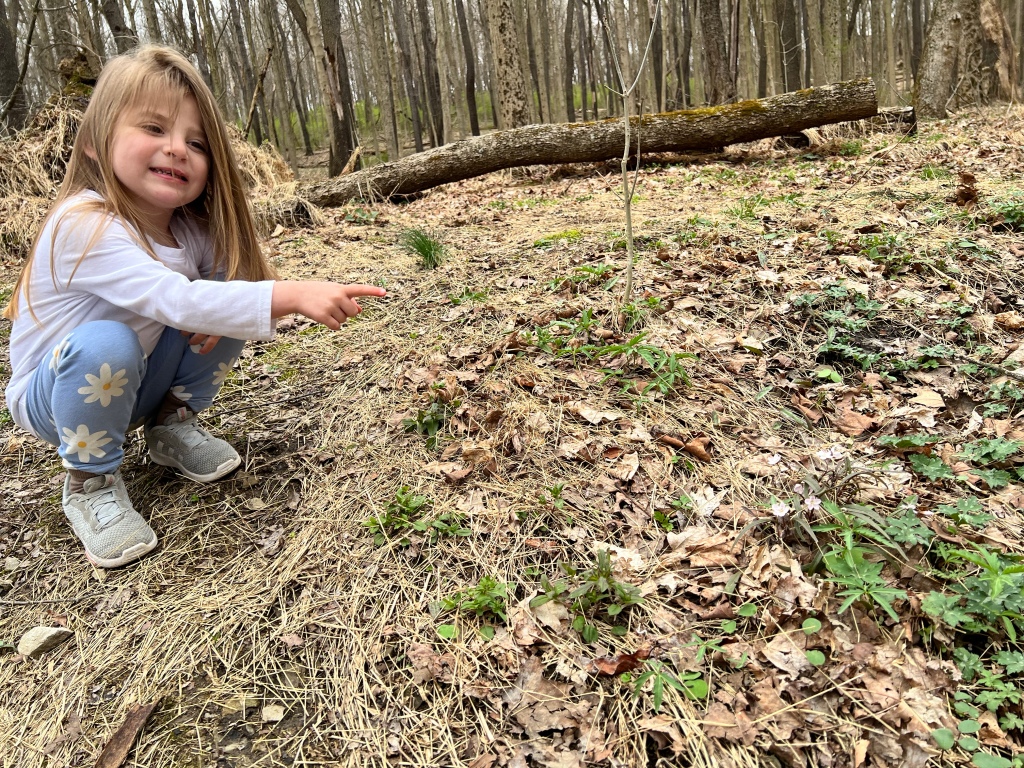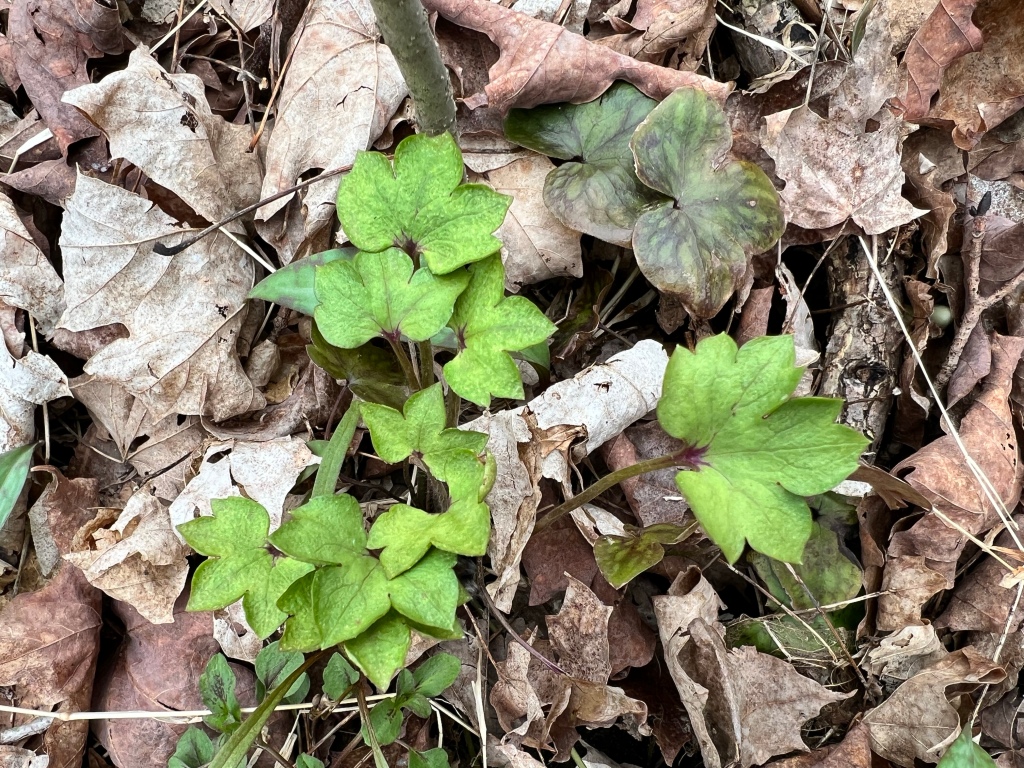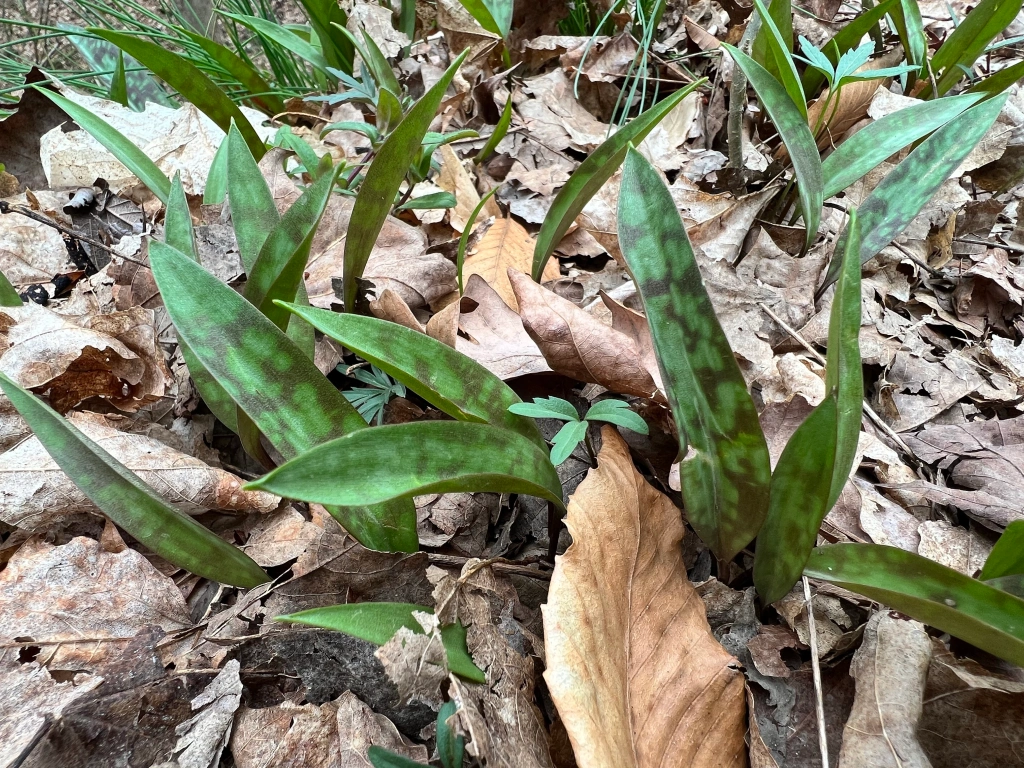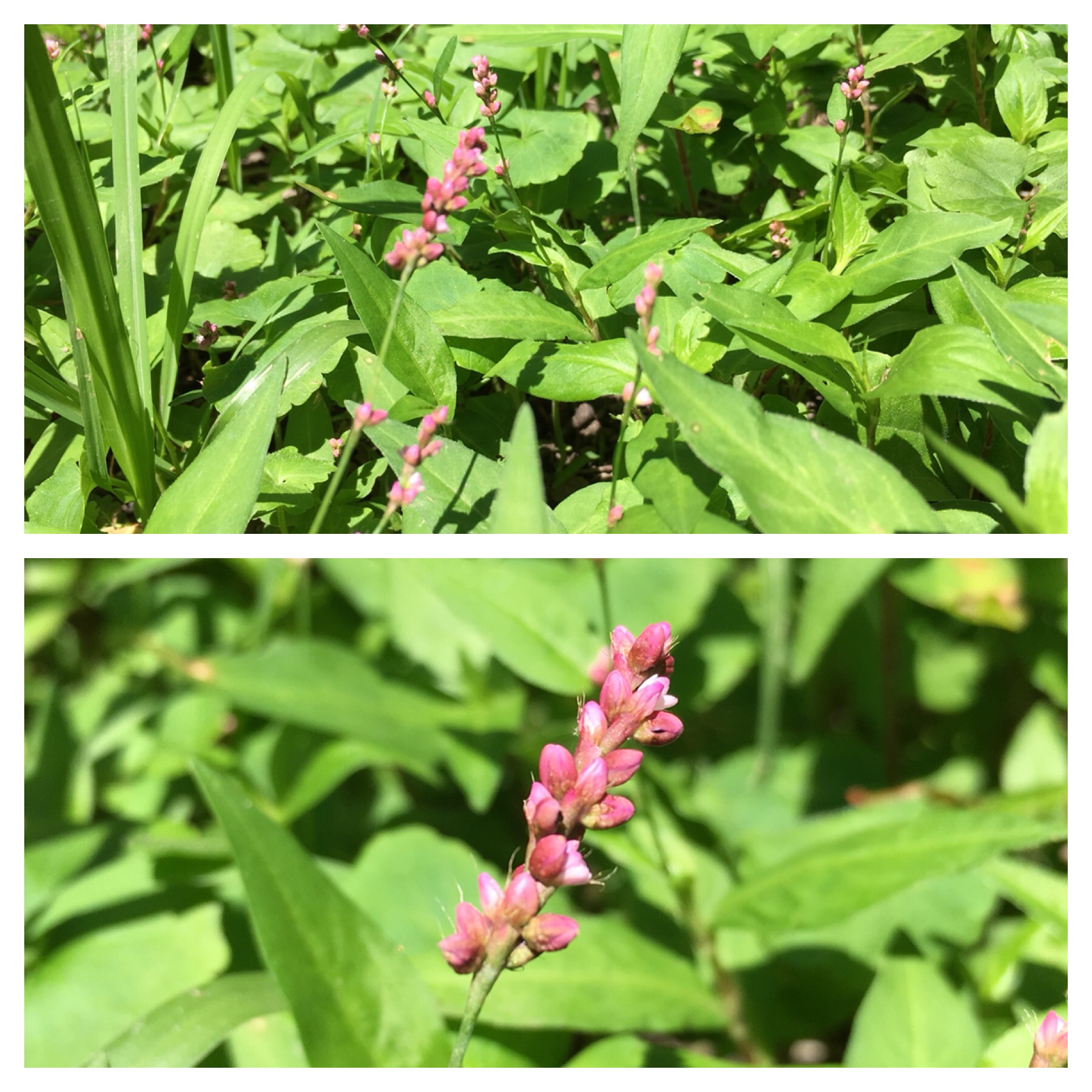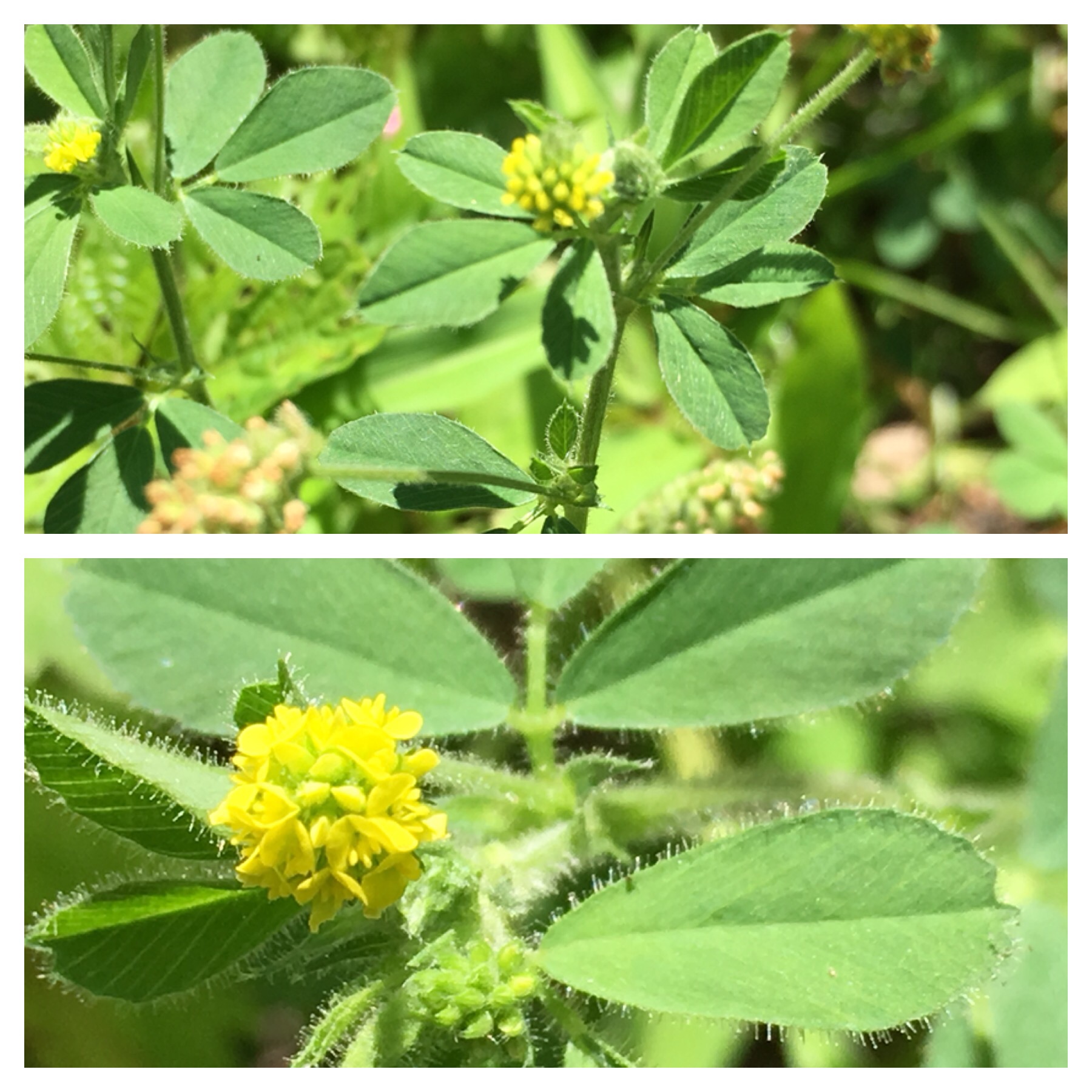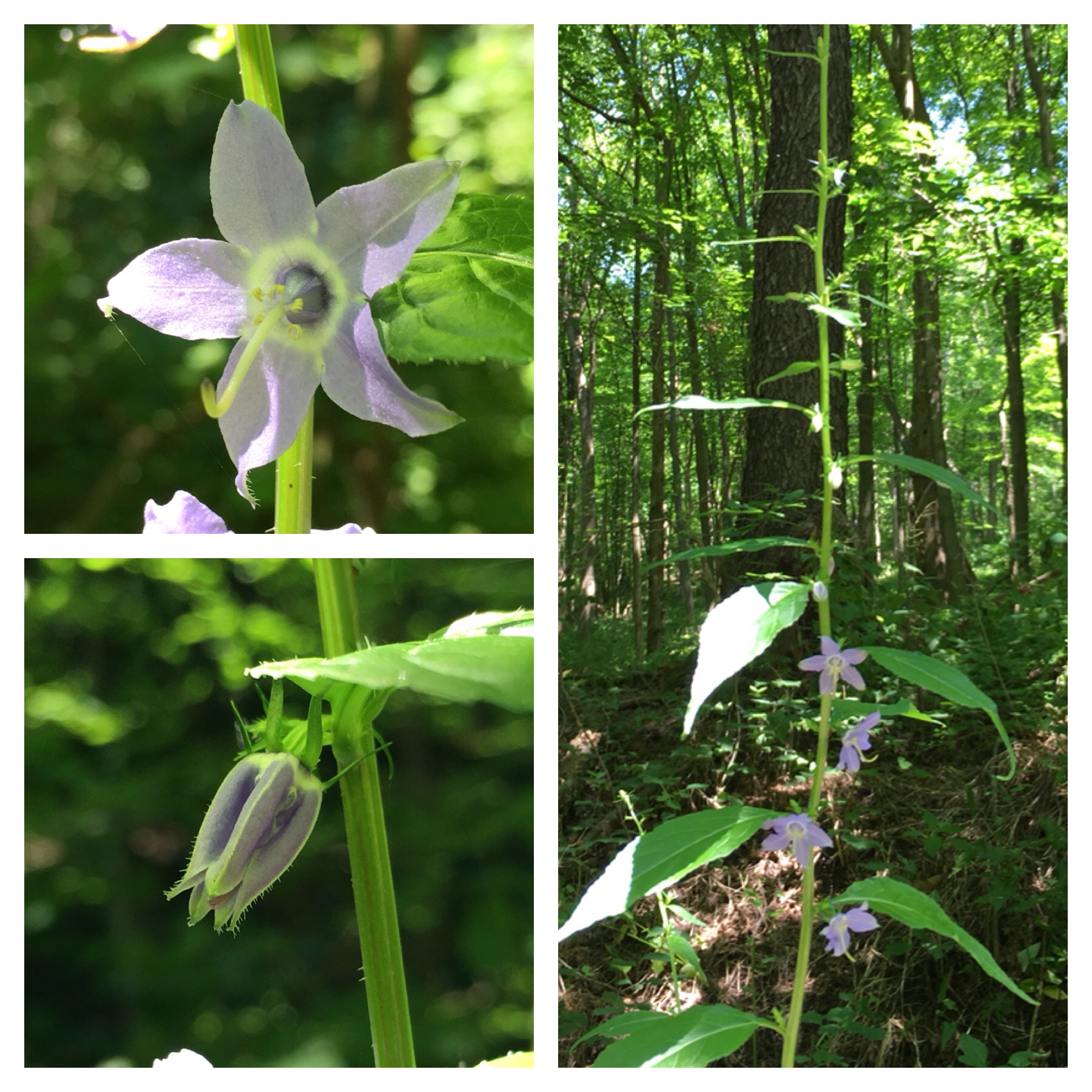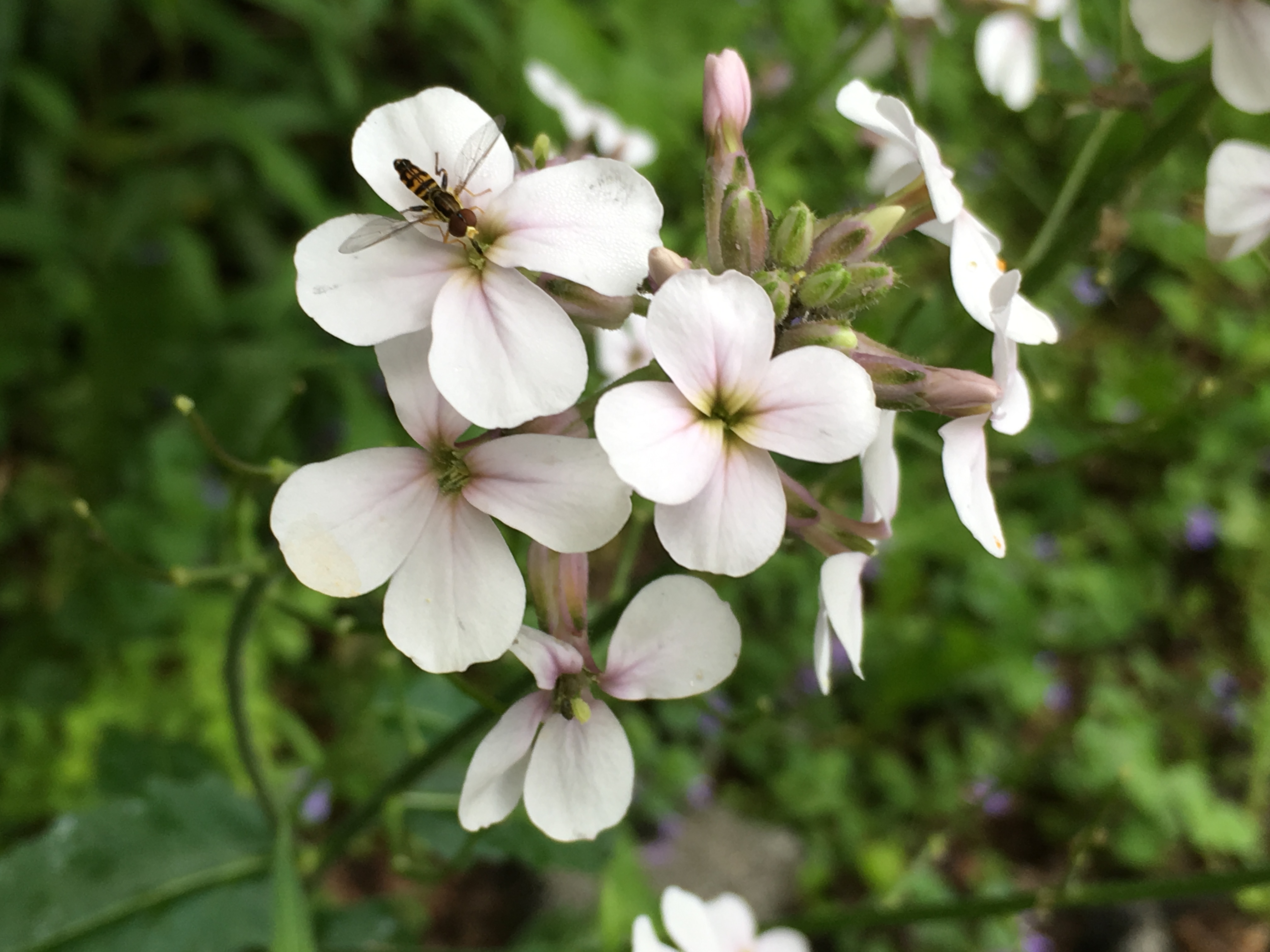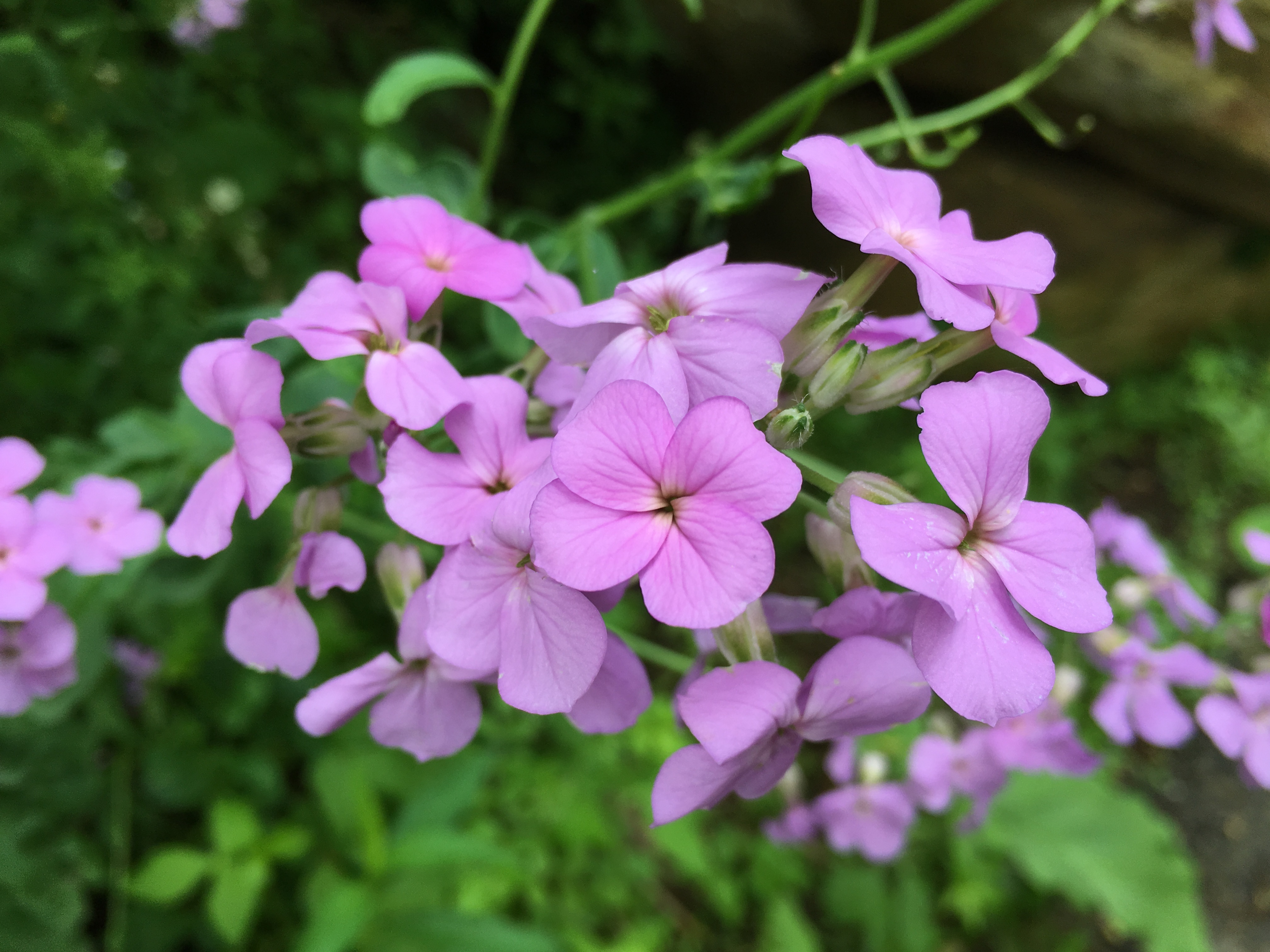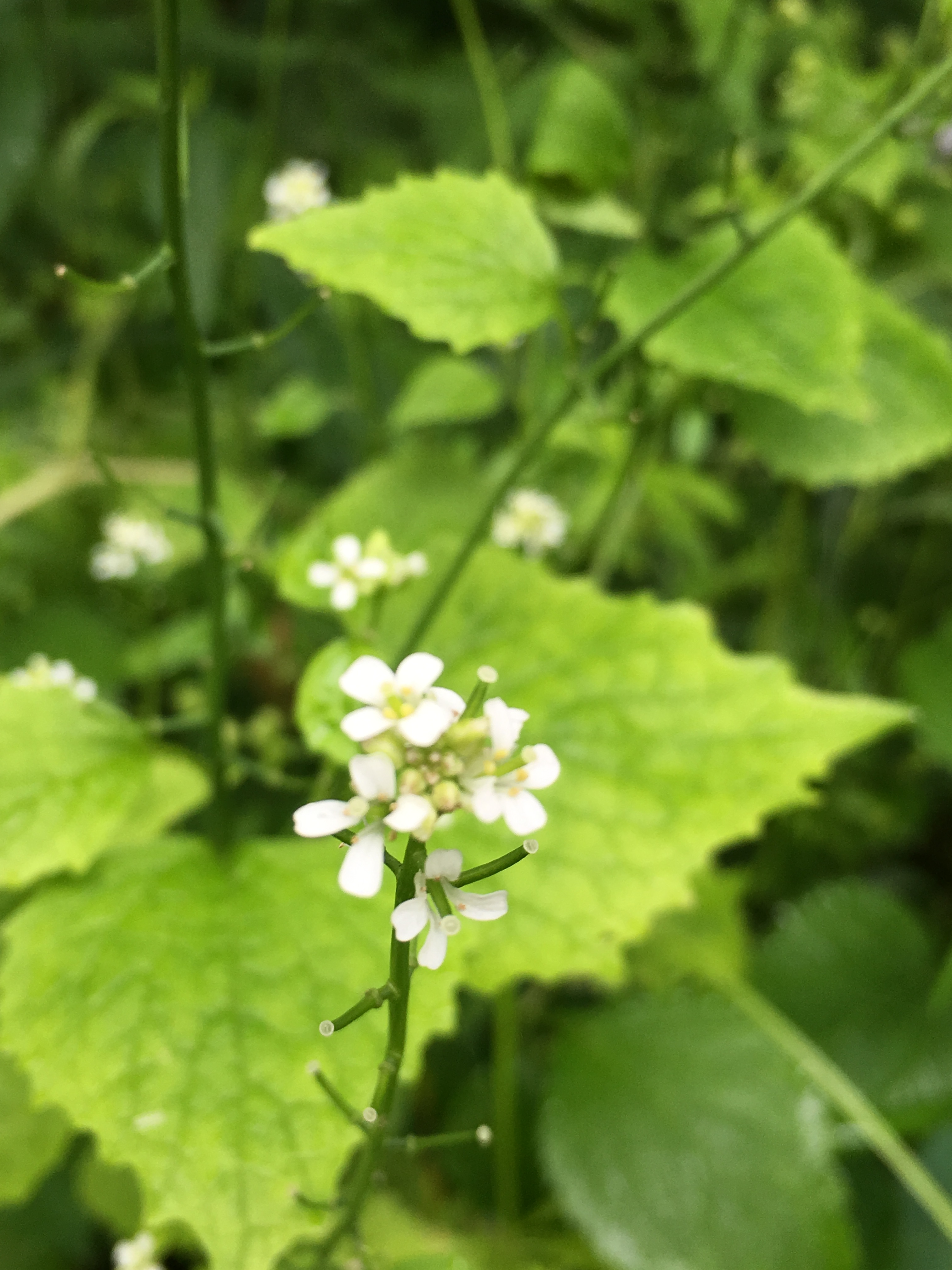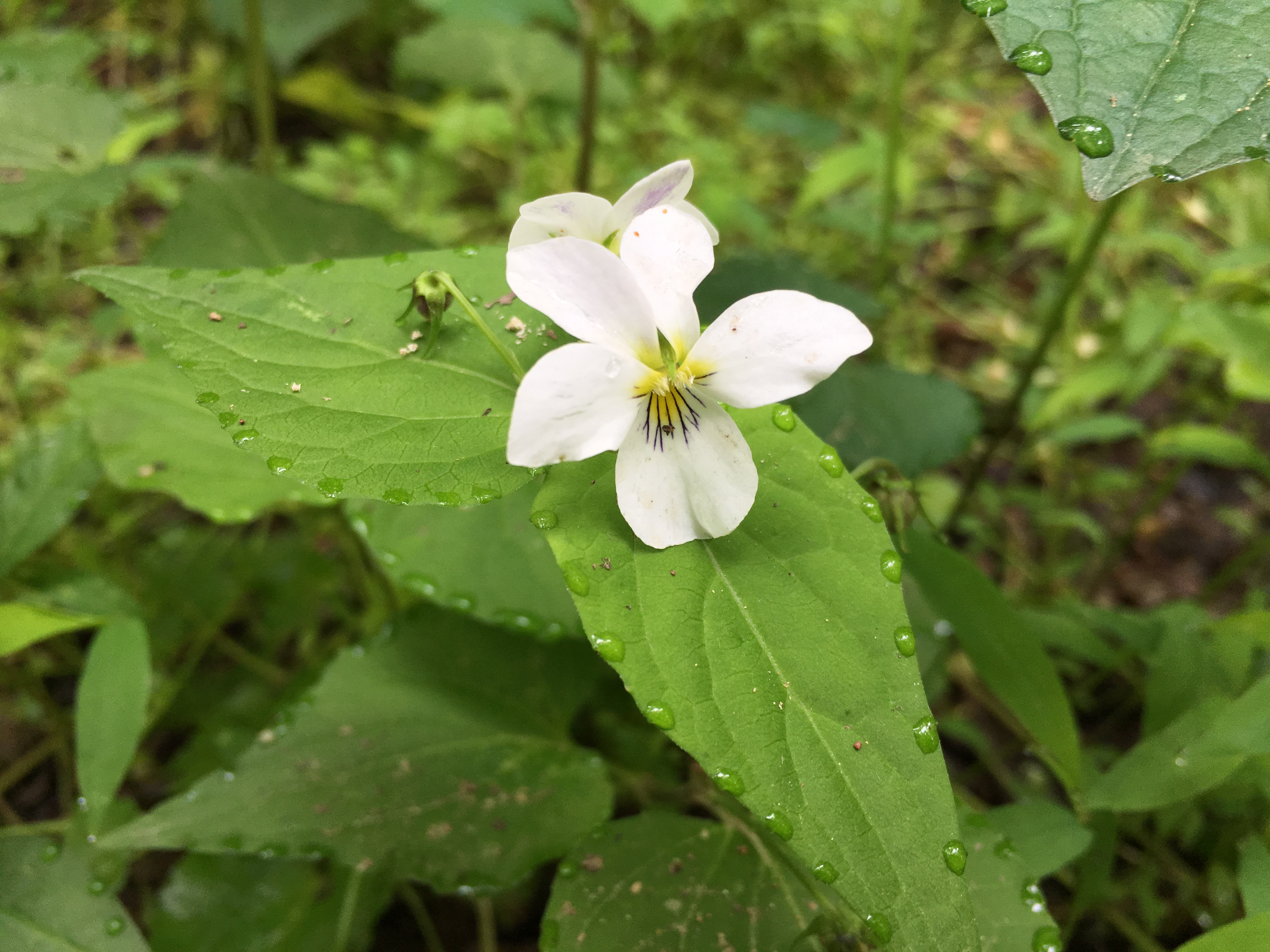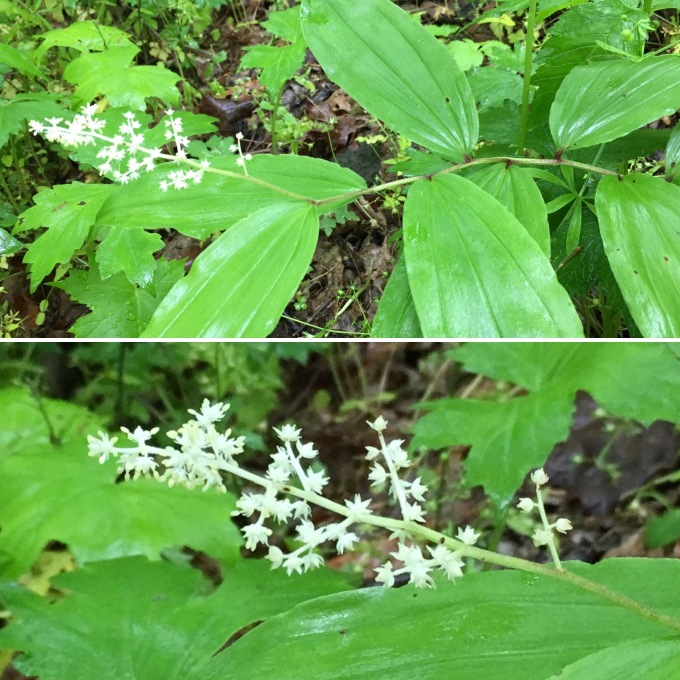Our first walks of the season brought local residents and Boy Scouts from Troop 251 of Larimer. Special thanks to those young men for their interest in the park and their continued support of ongoing projects there. Their questions and enthusiasm made the afternoon an enjoyable one.
In the first few days of spring, snow gave way to the early risers of the plant kingdom. Many were found in the sunlit spots through the park where snow was scarce, but much of Braddock’s Trail remained a white blanket.

The snow melted quickly on this Saturday, and over the course of a few hours, the landscape changed dramatically as white turned to color. Let’s start with a new one to the blog. We don’t talk much about it because it doesn’t flower, but it’s a common sight as winter ends. Frequently called “onion grass” or “wild chive,” this plant makes its home in yards and wilderness alike. It’s completely edible, even its white, subterranean bulbs, and many use it as a garden chive substitute.

Some of the first flowers to appear, and always near the parking lot are purple deadnettle and Persian speedwell. As Jack likes to point out, you don’t have to go far to see wildflowers. These two are commonly found in your own backyard.


Narrow-leaf spring beauty (above) and harbinger of spring (below) are two of the earliest wildflowers to bloom in the park. Only a handful were seen on this day. Late-season snowfall and cold temperatures have delayed their cycles.

Cutleaf toothwort is easily identified by its jagged leaves. Many were hiding in the snow, but none were in bloom. By the time this post is published, they’ll have opened with four-petaled white flowers.

One of our morning walk participants spotted these young bloodroot plants near the stream at the top of the waterfall. Not many of them have been seen at the park, but based on this new sighting, they seem to be doing well. They enjoy well-drained soils and streams, so this new foothold suits them perfectly. Large, white flowers open in sunlight, close at night, and are short-lived.

A few light purple hepatica were spotted in their usual area across the footbridge. They’ll be gone by mid to late April, and are brilliant when fully open. Expect them to be gone soon!

Some honorable mentions this week, which were identified by leaf patterns, are Dutchman’s breeches, waterleaf, Virginia bluebell, chickweed, and jewelweed. Dutchman’s breeches will bloom soon if it hasn’t already, along with chickweed. Virginia bluebell will follow later in April, followed by waterleaf, and then jewelweed in early summer.

Please join us for our second walk on Saturday, April 14 at 10:30 A.M.


